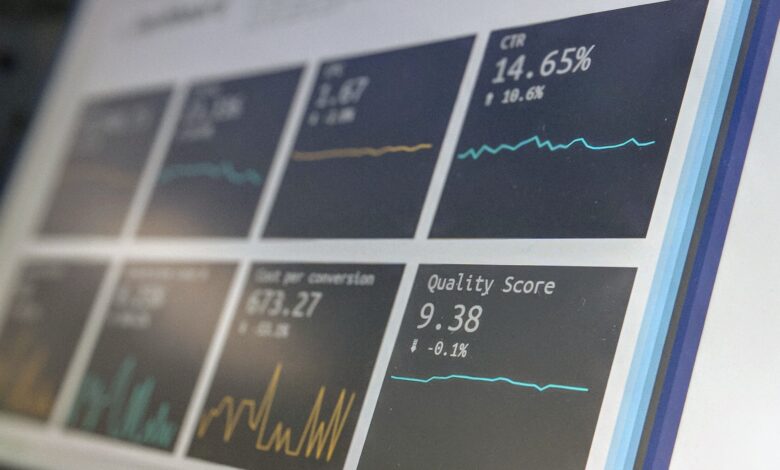
How to Become a Data Analyst: A Step-by-Step Guide
Have you ever wondered how data analysts make sense of all the data? Data is everywhere, and it’s growing at an alarming rate. Data is generated from social media, online transactions, sensors, and more.
As a result, organizations are looking for people who can help them make sense of all this data. That’s where to start to become a data analyst. Data analysts are responsible for collecting, cleaning, and analyzing data. They use their findings to help businesses make better decisions.
If you’re interested in a career in data analysis, you’re in the right place. In this guide, we’ll show you how to become a data analyst. We’ll discuss qualifications do you need to be a data analyst and succeed in this field and the steps you need to take to get there.
What is a Data Analyst?
A data analyst is someone who collects, cleans, processes, and analyzes data. Data analysts are often responsible for taking raw data and turning it into insights that can be used to improve businesses, products, or processes. In other words, data analysts help organizations make better decisions by turning data into actionable information.
Why To Become a Data Analyst?
Before we get started, let’s answer the question: why become a data analyst?
Here are some of the reasons you might want to consider a career in data analysis:
1. Job Security
The demand for data analysts is growing at a rapid pace. In fact, the number of jobs for data analysts is expected to increase by 27%! This far outpaces the average growth rate for all other occupations. This means that if you become a data analyst, you’ll have plenty of job opportunities to choose from.
2. High Salaries
Data analysts are also very well-compensated for their skills. The median data analyst salary for a data analyst is $60,000. But experienced data analysts can earn much more than that. In fact, the top 10% of earners in this field make more than $110,000!
3. Mental Stimulation
If you’re looking for a challenging and mentally stimulating career, data analysis might be the right field for you. Data analysis requires both creative and critical thinking. You’ll need to be able to see the big picture as well as pay attention to the details. You’ll also need to be able to find patterns and relationships in data.
4. Helping Others
As a data analyst, you’ll be in a position to help others make better decisions. Your work will have a direct impact on the success of your organization. If you’re looking for a career that allows you to make a difference, data analysis is a great option.
5. Variety
No two days as a data analyst are alike. You might be working on one project one day and something completely different the next day. This variety can help keep your job interesting and exciting.
How Long Does It Take to Become a Data Analyst?
Now that we’ve answered the question “why become a data analyst,” let’s discuss how long it takes to become one. The good news is that you don’t need to spend years in school to become a data analyst. In fact, many people who enter this field have only completed a bachelor’s degree or even just some college courses. That being said, if you want to improve your chances of getting hired as a data analyst, it helps to have some formal education or training in this field.
There are many ways you can go about doing this. One option is to complete an internship while you’re still in school. This will give you some real-world experience working with data sets and performing analysis. You can also consider completing a fellowship program after graduation. These programs typically last 1-2 years and provide participants with intensive training in data analysis techniques and tools.
Another option is to complete an online certification program in data analysis or related field such as business intelligence or big data analytics. These programs typically take 6-12 months to complete and will give you the skills and knowledge you need to succeed as a data analyst.
Gaining the Essential Skills
It seems like everywhere you turn, someone is talking about data. And with good reason – data is becoming increasingly important in our world. In this blog post, we’re going to answer those questions and talk about the essential skills you need to be a successful data analyst
Data analysts typically have a strong background in mathematics and statistics. They also need to be proficient in computer programming and database management. And, perhaps most importantly, data analysts need to be able to think critically and solve problems.
The role of data analyst is often confused with that of a data scientist. While both roles involve working with data, there are some key differences. Data scientists are responsible for more than just analyzing data; they also build models and algorithms, and use their findings to make predictions. Data scientists usually have a stronger background in computer science than data analysts.
How to Become a Data Analyst Without a Degree
It is possible to become a data analyst without a degree. In fact, many data analysts have degrees in fields unrelated to data or computer science. However, if you don’t have a background in mathematics or computer science, then it will likely take you longer to learn the necessary skills.
There are a few different ways you can learn the skills needed to be a data analyst without a degree. One option is to take online courses. Coursera, Udacity, and edX all offer courses that can teach you the basics of data analysis.
Another option is to find resources online. There are many blog posts, articles, and tutorials that can teach you the basics of data analysis. And if you want to learn more about specific tools or programming languages, there are plenty of resources for that as well.
Finally, you can also get experience by working on projects on your own time. If you’re not sure where to start, try finding datasets online and see if you can answer some questions with the data. Or, try working on personal projects that involve data analysis. For example, you could try building a simple web app that uses data from an API.
Data Analyst Roadmap
Now that we’ve answered the question “what is a data analyst?” and talked about how long it takes to become a data analyst, let’s take a look at the steps you need to take to become a data analyst.
Here’s a basic roadmap for becoming a data analyst:
1. Become very familiar with excel as well as SQL these are two key toolsdata analysts use daily
2. Start practicing building pivot tables as well as vlookups they will comin handy
3. Start diving deeper into formulas such as If Statements, Sumifs,Countifs etc…
4. If unfamiliar with SQL start by taking an introductory course soyou can start writing queries
5. Next important step is mastering Data Visualization techniques, this will be key when presenting your findings to clients/bosses
6. After perfecting your excel & SQL skills and building up your data visualization portfolio its time start applying for jobs!1. Learn the basics of mathematics and statistics.
7. Learn a programming language like Python or R.
8. Learn how to use tools like Excel or Tableau.
9. Get experience working with data.
10. Continue learning and keep up with the latest trends.
This is just a basic roadmap – there are many different paths you can take to become a data analyst. And depending on your background and experiences, you might need to focus on different steps. But in general, these are the steps you need to take to get started on your journey to becoming a data analyst.
Pursuing Professional Certification
The pursuit of professional certification is a commitment of time and money. The investment in both is significant, and the decision to pursue certification should not be made lightly. The most important factor to consider is whether the individual is interested in and committed to the field of data analytics.
The value of certification also depends on the individual’s career goals. For those interested in becoming a data analyst, certification can be helpful in validating one’s skills and knowledge to potential employers. It can also lead to increased earning potential and job security. The data analyst vs data scientist debate is one that is often brought up when discussing certification. Data analysts are more focused on working with data to identify trends and patterns, while data scientists are more focused on finding ways to use data to solve problems. Both roles are important in the field of data analytics, and it is generally recommended that individuals interested in pursuing a career in data analytics become certified as a data analyst.
The amount of time it takes to become a data analyst depends on a number of factors, including previous work experience, education, and the level of certification pursued. Those with no prior experience or education in the field can expect to spend at least a year acquiring the necessary skills and knowledge. Those with experience or education in related fields may be able to complete the process in a shorter amount of time. There are a variety of data analyst courses available, and the best way to determine how long it will take to become a data analyst is to consult with an advisor or expert in the field.
Exploring Different Careers in Data Analysis
When it comes to data analysis, there are a lot of different career paths that you can take. And, depending on your skillset and interests, the path you take can lead to a very rewarding and successful career.
So, if you’re interested in exploring different careers in data analysis, then read on. We’ll take a look at some of the different paths you can take, and we’ll also give you some insights into what you can expect in terms of data analysts salary and job outlook.
One of the most popular career paths in data analysis is that of a data analyst. A data analyst is someone who is responsible for collecting, cleaning, and analyzing data. They may also be responsible for creating reports and visualizations to help communicate their findings.
Data analysts typically have a strong background in mathematics and statistics. They may also have experience working with various software programs, such as Excel and SQL.
If you’re interested in becoming a data analyst, then you’ll need to have at least a bachelor’s degree in a field such as mathematics, statistics, or computer science. However, if you want to boost your chances of getting hired, then you may want to consider getting a master’s degree in data analytics or a related field.
As for salary, data analysts can expect to earn a median salary of $62,000 per year. And, according to the Bureau of Labor Statistics, the job outlook for data analysts is very positive, with an expected growth rate of 19% between 2018 and 2028.
Another popular career path in data analysis is that of a data scientist. A data scientist is someone who is responsible for extracting insights from data. They use their skills in statistics, mathematics, and computer science to analyze data and to build models that can be used to make predictions.
Data scientists typically have a very strong background in mathematics and statistics. They may also have experience working with various software programs, such as R and Python.
If you’re interested in becoming a data scientist, then you’ll need to have at least a bachelor’s degree in a field such as mathematics, statistics, or computer science. However, if you want to boost your chances of getting hired, then you may want to consider getting a master’s degree in data science or a related field.
As for salary, data scientists can expect to earn a median salary of $108,000 per year. And, according to the Bureau of Labor Statistics, the job outlook for data scientists is very positive, with an expected growth rate of 15% between 2018 and 2028.
So, there you have it. These are just two of the many different career paths that you can take in data analysis. No matter which path you choose, you can expect to earn a good salary and to have a bright future ahead of you.
Understanding Data Analytics Trends
There are a number of factors driving the growth of data analytics. First, the availability of data has exploded thanks to the growth of the internet and the proliferation of connected devices. Second, advances in computing power and storage have made it possible to collect and analyze data at a much faster pace. And finally, the development of new analytical techniques has allowed us to extract more value from data than ever before.
These trends are having a major impact on the way businesses operate and the nature of competition. Those who are able to harness the power of data analytics will have a significant advantage in the marketplace.
The field of data analytics is rapidly evolving and it can be difficult to keep up with the latest trends. Here are three key trends that you should be aware of:
1. The Rise of Artificial Intelligence
Artificial intelligence (AI) is one of the most talked about topics in the tech world today. And for good reason, AI has the potential to transform a wide variety of industries, from healthcare to transportation.
In the field of data analytics, AI is being used to automate repetitive tasks, such as data entry and analysis. This is allowing analysts to free up their time so they can focus on more strategic tasks. AI is also being used to develop new analytical methods and to improve upon existing ones. For example, machine learning is a type of AI that is being used to develop predictive models that can identify patterns in data.
2. The Growth of Big Data
The term “big data” refers to datasets that are too large and complex for traditional data processing methods. Thanks to the growth of connected devices and the internet, businesses are now generating more data than ever before.
Big data presents both opportunities and challenges for businesses. On the one hand, big data can be used to improve decision making and increase efficiency. On the other hand, managing and analyzing big data can be a challenge due to its size and complexity.
3. The Emergence of the Cloud
The cloud is a network of remote servers that are used to store, manage, and process data. The cloud has emerged as a popular solution for businesses that need to be able to access their data from anywhere in the world.
The cloud has made it possible for businesses of all sizes to take advantage of data analytics. In the past, only large enterprises had the resources necessary to store and process large amounts of data. But now, with the cloud, even small businesses can access the same powerful data analytics tools that were once only available to the biggest players in the market.
Utilizing Data Visualization Tools
As the world becomes more and more digitized, the demand for data visualization tools is only going to increase. Data analysts are responsible for taking large amounts of data and turning it into something that is easy to understand and can be used to make decisions.
There are a variety of data visualization tools available, and the one you choose will depend on the data you are working with and your own personal preferences. Some of the most popular data visualization tools include Tableau, Google Charts, and D3.js.
Conclusion
There are a few key things to remember when thinking about a career in data analytics. First, although a data analyst course can be helpful, a business degree is also a valuable asset. Second, also a data analyst with a business degree role require strong technical skills, so it is important to have a firm understanding of statistics and computer science. Finally, the best way to get started in this field is to look for internships or entry-level positions that will give you the opportunity to learn from more experienced analysts.
With the right skills and experience, a career in data analytics can be extremely rewarding. The demand for qualified analysts is only increasing as more and more businesses rely on data to make decisions. If you are interested in pursuing a career in this field, the best place to start is by finding a few good data analyst courses that can help you develop the skills you need.











